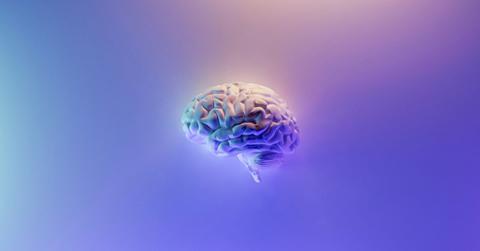Innovative Treatments for Stuttering May Be Possible After Researchers Identify Cause of Disorder

The new study found a common brain network, which is causing all stuttering.
An international team of researchers has found that all stuttering is caused by a common brain network, whether the stuttering began in childhood or developed later as a result of stroke.
Stuttering, a speech rhythm disorder that involves involuntary repetitions, affects some five to 10 percent of young children, with about one percent continuing to stutter into adulthood. Stuttering can also develop as a result of neurological conditions, such as Parkinson's disease or a stroke.
But brain imaging studies have in the past produced partly contradictory results, making it a challenge to which brain changes are the root cause of stuttering and which are simply associated phenomena.
Now, researchers from Finland, New Zealand, the U.S. and Canada, led by researchers from the University of Turku and Turku University Hospital in Finland, have developed a new research design to help pinpoint the problem, by looking at both patients with developmental stuttering from childhood and patients with neurological stuttering that developed after a stroke.
“Stuttering was once considered a psychological disorder. However, with further research, it is now understood to be a brain disorder related to the regulation of speech production,” Professor of Neurology Juho Joutsa from the University of Turku said in a statement.
The new study, published in the journal Brain, looked at stroke patients, some of whom developed a neurological stutter immediately afterward. Researchers found that despite the fact that the strokes that caused stuttering were all located in different parts of the brain, they all localized to the same brain network, unlike the strokes that did not cause stuttering.
- What Lies Beneath: NASA Scientist Believes Aliens May Have Found 'Perfect' Hiding Spot in Earth's Oceans
- Global Threat: Russia Insider Warns West of 'World War Using Nuclear Weapons' Amid Escalating Support for Ukraine
- Countdown to Disaster? Ex-NATO Official Warns Russia, Iran and China Could Wage WWIII in Just Years
Magnetic resonance imaging (MRI) scans of the brains of 20 people with developmental stuttering showed structural changes in the nodes of the same brain network identified in the stroke patients — the putamen, amygdala and claustrum, deep within the brain, and the connections between them.
The greater the changes in that brain network, the more severe the stuttering, researchers found.
Never miss a story — sign up for the Front Page Detectives newsletter. Be on the scene the moment news breaks.
"These findings explain well-known features of stuttering, such as the motor difficulties in speech production and the significant variability in stuttering severity across emotional states. As major nuclei in the brain, the putamen regulates motor function and the amygdala regulates emotions. The claustrum, in turn, acts as a node for several brain networks and relays information between them,” Joutsa said.
Researchers say their work may lead to new treatment possibilities for stuttering, such as with brain stimulation targeted to the newly identified brain network.
TMX contributed to this report.
Become a Front Page Detective
Sign up to receive breaking
Front Page Detectives
news and exclusive investigations.
